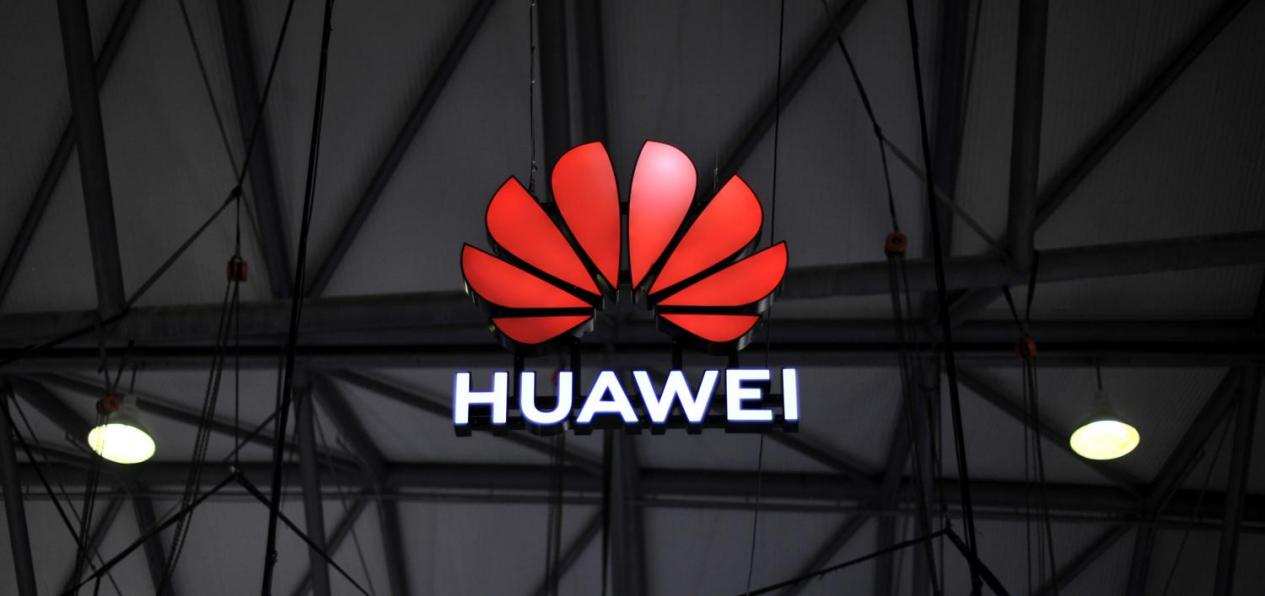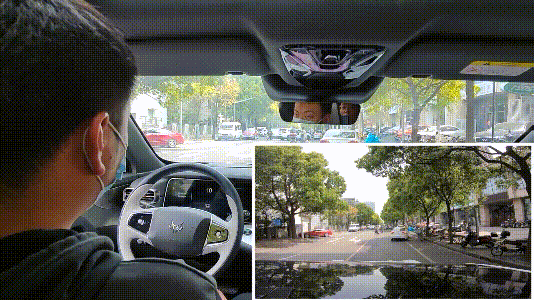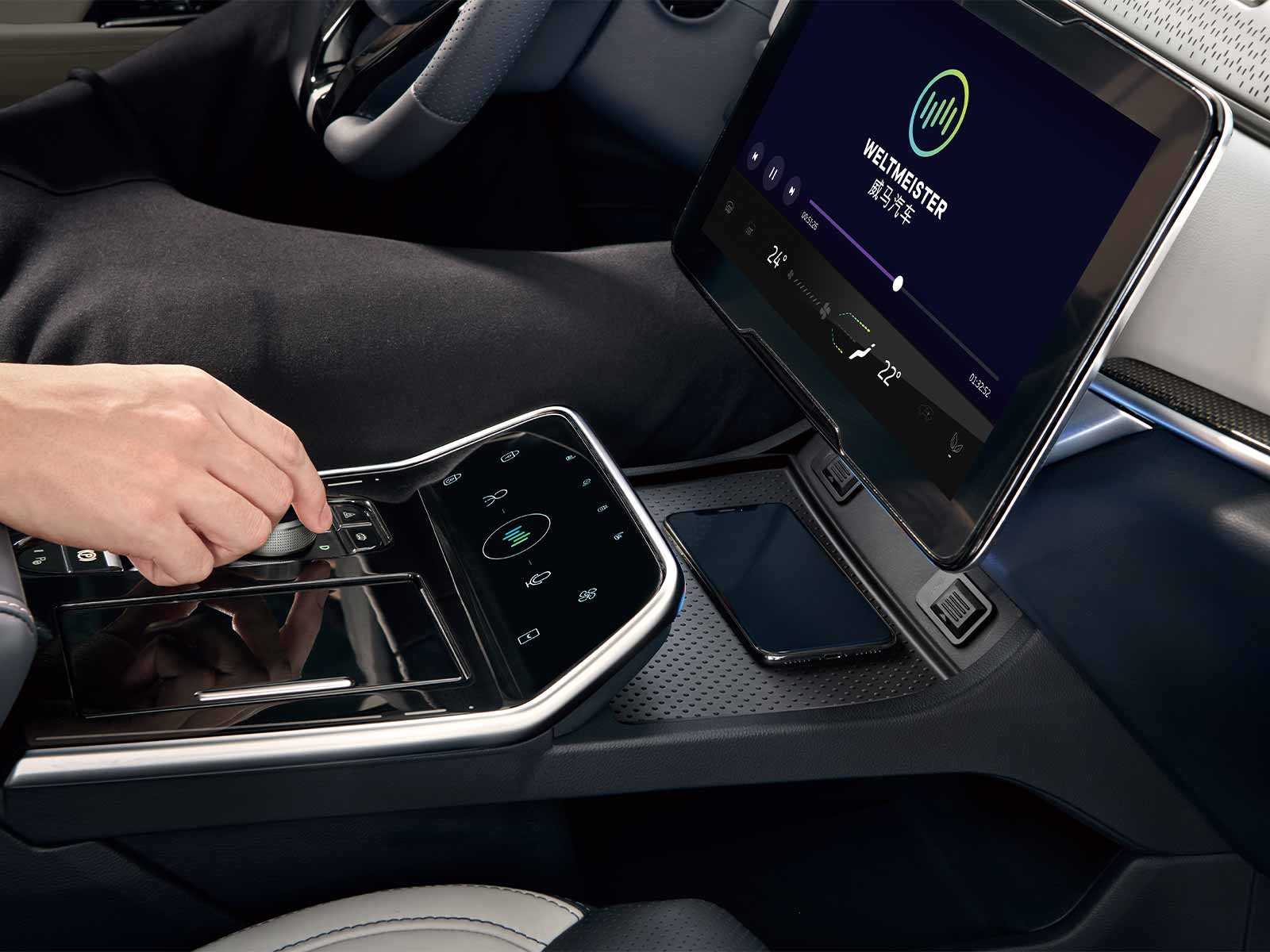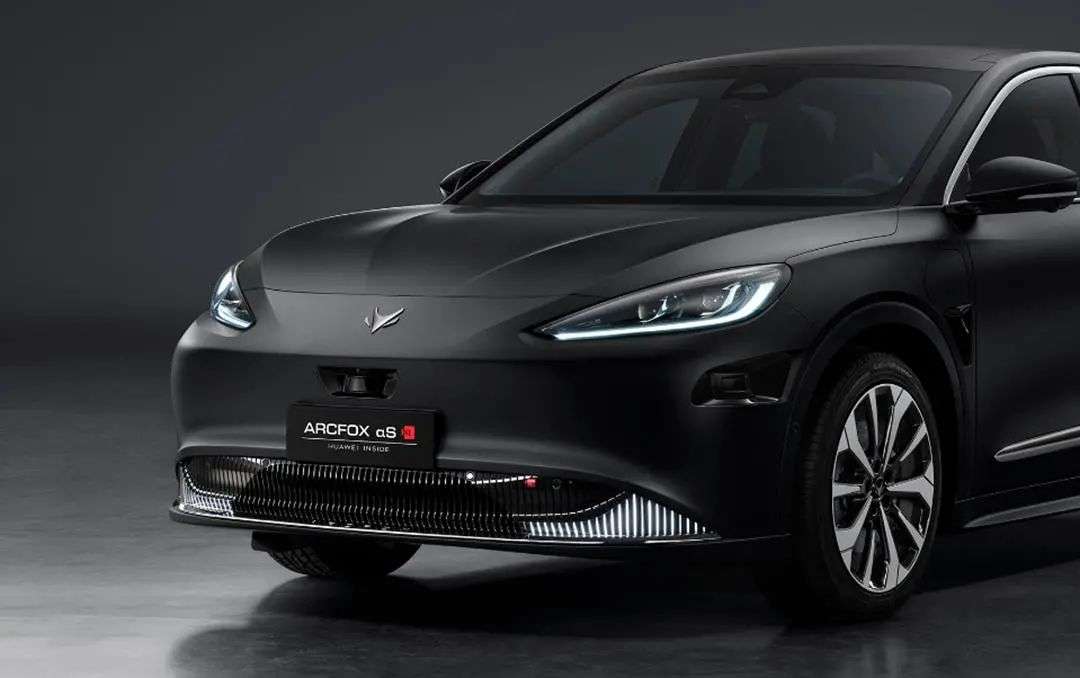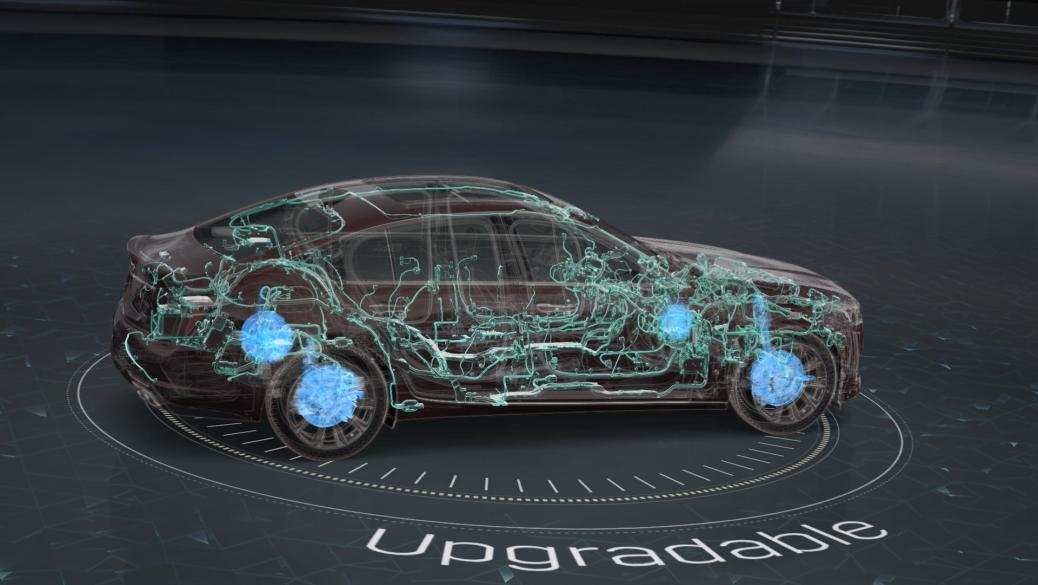Seeing the right time to “join the war”, can Huawei take the high-end route?
Editor’s note: This article is from the WeChat public account “Intelligent Relativity” (ID: aixdlun), author: Jiang Sijing.
“One stone caused a thousand waves of waves.” Since Huawei announced its official participation in the “Automobile Bureau”, news surrounding Huawei’s automotive business has continued to emerge.
On April 15, Huawei announced the public test ride of the BAIC New Energy Polar Fox Alpha S HI version model equipped with Huawei’s autonomous driving technology in Shanghai. This is also the first public test ride of Huawei’s autonomous driving technology in the world.
Two days later, on April 17, BAIC New Energy’s high-end brand ARCFOX Polar Fox launched its second new car, Polar Fox Alpha S. There are 6 versions of the new car, priced from 251,900 yuan to 429,900 yuan. Among them, the Alpha S Huawei HI version, which is cooperating with Huawei, was also unveiled as scheduled, with two versions, a basic version and a high-end version, with pre-sale prices of 388,900 yuan and 429,900 yuan respectively.
On the eve of the Shanghai International Auto Show, on April 18, at the Huawei HI new product launch conference, Wang Jun (hereinafter referred to as “Wang Jun”), President of Huawei Smart Car Solutions BU, said that Huawei will release five new products, covering smart Cockpit, computing platform, radar, automatic driving open platform and thermal management system.
On April 20th, three Cyrus Huawei Smart Selection SF5 cars drove into Huawei’s world’s largest flagship store on Nanjing East Road, Shanghai. Together with Huawei’s mobile phones, smart screens, PCs and series of smart selection products, waiting Consumer selection and purchase.
The latest news is that Yu Chengdong, who was transferred to the Huawei Cloud business as CEO in April this year, was appointed as the CEO of Smart Car Solution BU (hereinafter referred to as “Car BU”) on May 18th. In addition, Yu Chengdong He still serves as the CEO of Consumer BG.
From the release of test ride videos, to the launch of cooperative models and new products, then to the offline store sales, and finally to the personnel changes of the car BU. Huawei’s combination of punches is exquisite.
Behind this combo boxing, where has Huawei’s autonomous driving technology, which has officially ended, developed to? What impact will Huawei’s entry have on the entire smart car industry?
Huawei has finally taken the first step to “engage in” cars.
Huawei’s demise has given the turbulent car market a “heavy blow”.
The Alpha S model jointly launched by Huawei and BAIC has attracted widespread attention and discussion. The big reason is that this is the first time that Huawei has joined the “car-making movement” as an industry participant. According to the expression, Huawei’s layout in smart cars is much more than that.
Wang Jun said that the new model of Huawei’s cooperation with Changan will also be launched soon. The L4 intelligent driving car plan to cooperate with GAC will be launched in 2024. In addition, Huawei Smart Selection will formally cooperate with Xiaokang shares to sell in its channels.Sell Cyrus, a new energy brand of Xiaokang shares.
Behind the ability to reach cooperative relationships with many car companies is Huawei’s continuous increase in investment in the automotive business. Wang Jun once said that in 2021, Huawei’s investment in the research and development of the automobile business will reach 1 billion US dollars, and the number of R & D team members will exceed 5,000, of which the number of employees in the autonomous driving team will exceed 2,000.
It is worth noting that, at a time when smart hardware manufacturers lacking the automotive industry chain have begun to build cars, Huawei’s entry time is obviously not too early. Why did Huawei decide to enter the game at this time? What are the intentions behind this? “Intelligent Relativity” believes that this may be related to the following two factors:
First, Huawei has always implemented a “sound” development strategy. Throughout the development history of Huawei, whether it was the earliest production of subscriber switches or later focused on the smart phone business, Huawei has achieved good results in the business that it is determined to invest in. But from the perspective of the time when it cuts into the new track, Huawei is often not the “first crab” company, and the same is true in the field of car manufacturing.
The formation of this development strategy can be said to be Huawei’s proactive choice, or it can be said to be a “helpless move”. From 1998 to 2002, the domestic communications market entered the explosive period of 2G construction, but at that time the market share was basically divided by foreign companies such as Ericsson, Motorola, and Nokia, and foreign communications giants adopted a joint price reduction approach. Prevent Huawei from obtaining orders.
Twenty years later, history repeats itself again. Huawei’s current situation is no better than 20 years ago, only worse. If Huawei is determined to attack and strive to be the number one in the car manufacturing industry, Huawei may have lost its first opportunity; then, it is the best policy to support it first and then play at the right time.
Second, from the external environment, Huawei’s fate at this time may also be stepped on at the right time. 2017 can be described as the first wave of electric vehicles, but there is no end to worry about the bubble in the industry; the continuous losses of the companies that entered the market in 2019 made the industry go to a trough; and with the profit of Tesla in 2020, new domestic car manufacturers With the increase in deliveries, the industry also ushered in a second wave of climax.
According to “Chinese Entrepreneur” statistics, from November 2020 to March 2021, within 5 months, Didi, pony, momenta, WenNine companies including Yuanyuan, Zhijia, Tucson Future, Inspector, Uisee, and Horizon received a total of US$3.4 billion in financing. The valuation of autonomous driving companies is also rising. The latest valuation of Didi’s autonomous driving subsidiary is approximately US$6 billion, and the latest valuation of Pony.ai is US$5.3 billion.
In terms of time, the absolute time for Huawei’s official end is not early, but from the perspective of the industry’s development trajectory and history, Huawei’s entry at this time may be selected at a relatively favorable development time.
In the vigorous “car-building team”, Huawei’s huge size and relatively strong ICT technical capabilities have pushed it to a higher position, and “at a high position”, doubts must be indispensable.
Is Huawei’s “car route” smooth?
On April 18th, three days after Huawei announced its self-driving video, the comment of an “bystander” was topped in the public opinion field-“Tesla finally encountered an opponent with equal technical prowess and flickering ability. .”
The commenter is Wang Xing, the founder of Meituan.
It’s not just Wang Xing, but colleagues in the car industry also expressed their opinions on Huawei’s first model.
Xiaopeng Motors founder He Xiaopeng believes that Huawei is very good in the short term, but it is optimistic about the integration of software and hardware in the long run.
Li Bin, CEO of Weilai, believes: “Now the world’s mobile phone companies do not make as much money as Apple. Although Qualcomm, Android, and Google are great, in the end, Apple’s experience is the best, indicating the integrated design. Is very important.”
From the perspective of competitors, the emergence of a strong enemy is naturally not a good thing in the current car-making track filled with smoke. Aside from Huawei’s brand filters and the slightly ridiculous comments of its opponents, what kind of development strategy does Huawei use on the autonomous driving circuit? What is the technical capability of Huawei as Tier1’s first autonomous driving model?
1, L4 autonomous driving “Fengyun”
Alpha S’s autopilot technology has reached L4 level. This level of autopilot technology is highly automated, and the executor of driving operations is the system, not the driver. According to the video released by Huawei on April 15th, although the driver touched the steering wheel, he did not implement specific operations. The entire journey on urban roads relies on the automatic driving system.
At present, more than 90% of electric vehicles equipped with automatic driving systems on the market belong to L2-L2.5Level, the autonomous driving level of Alpha S Huawei HI version has reached L4 level, and mass production will be announced at the end of this year. Just under the background that the L3 level has not yet been rolled out on a large scale to achieve commercialization, how much credibility does Huawei have to reach the L4 level?
An industry insider stated to “Intelligent Relativity”: “Huawei HI version claims to be L4 level, but in fact it is based on L4 level autonomous driving architecture and provides L4-L2+ level autonomous driving. The full-stack solution can meet the smooth evolution requirements of L4-L2+.”
It can be seen that the Huawei HI version only achieves the L4 level on the infrastructure, rather than the L4 in the full technical sense. In fact, it may only be the L2 level that can be achieved. Interestingly, Tesla once said that its autonomous driving system reached L5 level, and only after the inspection by the regulatory authorities did it admit that its FSD was only L2 level. The Huawei HI version equipped with L4-level infrastructure also paves the way for the later adaptive evolution based on driving data.
After the release of Huawei’s HI version, the Weimar W6, which was released shortly afterwards, also claimed that its autonomous driving system reached the L4 level-the AVP unmanned autonomous parking system powered by Baidu Apollo. This system claims to be the first to realize L4 level unmanned driving. In fixed parking spaces such as residences and companies, the vehicle only needs to learn once to find its way and park autonomously.
The AVP unmanned autonomous parking system of Weimar W6 only supports fixed parking space scenarios such as residences and companies, and how to solve the generalization of autonomous driving scenarios is an important factor in achieving automatic driving system upgrades. This generalization is embodied in the ability to drive in different scenarios such as tunnels, highways, and busy sections in urban areas, and its realization largely relies on high-precision maps.
The positioning of the Alpha S HI version is urban autonomous driving, and collecting city road network data is a rather large and complicated project. The high-precision map used by Xiaopeng P7 can onlyCovering high-speed sections of key cities, and according to public information, when mass production at the end of the year, the Alpha S HI version will only provide high-precision maps in the four cities of Beijing, Shanghai, Guangzhou and Shenzhen. It is speculated that large-scale mass production may still take time day.
In general, compared with peers, Huawei’s autonomous driving technology is at a relatively good level in the industry. However, the time for L4 to enter the practical stage depends not only on the hardware performance and local computing of the car, but also on the supporting infrastructure-or commonly known as “vehicle-road coordination”. And this is also a common problem faced by all players on the track.
2. Can the high-end route still pass through?
Huawei’s first car price as a supplier is quite controversial.
Alpha S Huawei HI version, the basic version and the high-end version are priced at 388,900 yuan and 429,900 yuan respectively. Among them, the basic version with Huawei ADS highway automatic driving function is priced at 388,900 yuan, equipped with Huawei The high-end version of ADS with complete automatic driving (including urban area, high-speed, valet parking, etc.) functions is priced at 429,900 yuan.
Even in the current mid-to-high-end new energy vehicle market, this price is not low. So, why can the Alpha S Huawei HI version sell so expensive?
Huawei’s technology used in the perception layer of autonomous driving is lidar. Alpha S Huawei HI version is equipped with three 96-line car-gauge lidars, Xiaopeng, the most radically advanced auto-assisted driving technology among the new car-building forces. , The latest Xiaopeng P5 also only uses two lidars.
The more lines of the lidar, the higher the recognition accuracy, the larger the amount of processed data, and the higher the cost. At present, the price of lidar from mainstream manufacturers in the world is not low. A 64-line mechanical lidar from Velodyne sells for 80,000 U.S. dollars, and the cheaper 16-line lidar also sells for nearly 10,000 U.S. dollars. So it can be said that in the current environment, the use of multi-linear lidar has pushed up the price of the Alpha S Huawei HI version to a certain extent.
Aside from the impact of 96-line lidar on the price increase, “Smart Relativity” believes that, judging from the price of Huawei’s Tier1’s first electric car, Huawei seems to want to adopt its mobile phone in the automotive business. The high-priced route of the business. However, can Huawei’s high price strategy work in the automotive field that does not currently occupy too much dominance?
Huawei’s P series and Mate series have been able to capture the high-end mobile phone market in recent years. Apart from feelings and brands, the most important thing is that Huawei has mastered complete ICT technology and the self-developed capabilities of Kirin and Kunpeng chips. From the perspective of the “Intelligent Relativity”, discussing Huawei’s electric vehicles cannot actually be separated from the mobile phone business. Both have technical and ecological aspects in common.
Technically, many sensors that Huawei relies on for autonomous driving are the same as its ICT business. For example, millimeter wave radar uses ToF technology to detect millimeter waves with a wavelength of 1-10mm. The 5G baseband chip Baron 5000 launched by Huawei also supports millimeter wave communications in the 26GHz and 28GHz frequency bands;
For example, the working principle of lidar is ToF, and Huawei P30 Pro is equipped with an infrared transmitter and ToF lens, which calculates the depth of field of the object by measuring the time difference of infrared light reflection, and optimizes the background blur effect of mobile phone shooting.
Ecologically, recently, Huawei Hongmeng OS system began to push the public beta version, and the number of compatible models has also begun to increase. Huawei Hongmeng OS system will begin to push the official version of the Hongmeng system on a large scale in June. On the Alpha S Huawei HI version, Hongmeng OS smart cockpit is also equipped, using Kirin 990A cockpit chip.
Huawei’s years of intensive cultivation in the ICT field have enabled Huawei’s existing ICT technology capabilities to partially migrate to its autonomous driving system. The integration of Hongmeng ecology has also incorporated smart cars into one of Huawei’s IoT, becoming an interface with far better traffic than smart phones.
An interesting aspect is that in interviews with reporters, He Xiaopeng, who is optimistic about Huawei in the short-term, believes that Xiaopeng’s upcoming urban NGP function will not perform worse than Huawei; Li Xiang also said that it is self-research The autopilot system (standard with 508Tops computing power and lidar) will be able to compete head-on with Huawei and Tesla next year. Both regard Huawei as a follow-up development goal.
The technical level may provide a focus for the high premium of Huawei’s automotive business. Will the market and the entire industry pay for it?
Is the full-stack solution the industry “antidote”?
Less than 48 hours after Huawei announced mass production of self-driving cars, Baidu also announced smart car solutions and self-driving car mass production plans.
One of the core products of the solution, Apollo Smart Drive, is an autonomous driving mass-produced engine based on L4 level autonomous driving technology. The engine includes the driving domain solution ANP and existing volume based on L4 level autonomous driving capabilities. The L4 autonomous driving parking area solution AVP produced by the company.
Baidu’s move is quite “point of needle to wheat”. Huawei’s recent series of actions in the automotive business have attracted the attention of major automakers. Among them, there are concerns about strong technological “latecomers”, and the entry of new entrants is also expected to bring benefits to the entire autonomous driving industry chain. factor. Specifically, what impact will Huawei have on the entire smart car industry and players in the industry?
Before discussing this issue, let’s take a look at the business scope and technical solutions of Huawei Automotive BU. Since the establishment of Che BU, its smart car business has developed five major business combinations, including smart driving, smart cockpit, smart electric, smart network, and car cloud services.
From the perspective of technical solutions, it is divided into basic hardware electric drive system, 5G module, autonomous driving sensor, computing platform module (automatic driving computing platform, MCU, domain control module), basic software system HiCar, Hongmeng operating system, CCA architecture.
From the perspective of business portfolio and technical solutions, Huawei’s full-stack self-developed smart car almost all core businesses, from hardware to software are involved. Tesla has the advantage of massive travel data for global users, Baidu’s algorithmic capabilities are second to none, and Huawei is more like an “all-round player”, able to connect the upstream and downstream of the industry chain, whether it is a new force in car building, or Didi and Xiaomi, which have announced that they have built cars, do not have it.
Huawei, which has full-stack self-research capabilities, is actually in a relatively favorable position in the smart car industry. At present, the smart car industry with an undecided pattern is in a relatively fragmented state, and the advantages of industry participants are only concentrated in a certain link. Huawei’s full-stack advantage may be able to integrate the current situation of the fragmented industry to a certain extent. Win a higher right to speak, but this may have to be proved by time.
Strong ability is one aspect, and how to deal with other players’ relationship constitutes another aspect. For other players in the industry, in the case of huge changes in the automotive industry chain, whether to trust Huawei and cooperate with it, is no longer a trust issue, but the future value chain Assignment issues.
Why do you say that?
In the traditional three-tier automobile industry chain, the complete machine manufacturer is at the outermost level, directly facing the consumer market; while Bosch, Continental, etc. provide electronic solutionsThe Tier 1 supplier of the case is in the middle tier. The OEM directly purchases the solutions or parts provided by Tier1 without knowing the technical structure. This also belongs to the scope of Tier1’s intellectual property protection.
With the development of pure electric vehicles and autonomous driving technologies, algorithm-driven “software-defined cars” have become a new trend, which is a threat to automakers. On the one hand, the core technologies such as transmissions and engines of OEMs are useless in pure electric vehicles; on the other hand, due to the inability to control the technology of electronic solutions provided by Tier1, car companies cannot independently find problems after the accident. Repair, you can’t promote the iteration of the ADAS algorithm by yourself.
Huawei, which has full-stack solution capabilities, has strong bargaining power when cooperating with OEMs. In the Alpha S Huawei HI version, Huawei’s logo is in a prominent position on the body. To a certain extent, Huawei, as a supplier, stands in the position of the OEM. This is in line with the usual OEMs’ control of the brand and sales channels in the past. In and out.
No one wants to be at the end of the industry chain in a new round of automobile revolution. Leading car companies have established software teams, focusing on self-developed autonomous driving perception algorithms, and trying to become their own through cooperation with Tier2 Tier1. However, if small and medium car companies without self-research capabilities choose to cooperate with Tier1 such as Huawei, how to distribute their profits and whether the production capacity requirements of small and medium car companies can meet Huawei’s mass production needs are issues that need to be faced in the future.
On April 28th, Huawei announced its operating results for the first quarter of 2021. Due to the sales of Honor and the decline in mobile phone sales, operating income fell by 16.9% year-on-year to 150.57 billion yuan. Huawei’s overall revenue is expected to be relatively large in 2021. pressure. The automotive business may be the focus of Huawei’s efforts in the next few years.
Huawei has invested heavily in the smart car business. The key to the later stage is to achieve mass production as soon as possible. How to deal with the delicate relationship with partners depends not only on the judgment of the OEMs on their own development, but also It is testing Huawei’s wisdom.
*The pictures in this article are all from the Internet
This content is the original [Intelligent Theory of Relativity] and only represents personal views. Without authorization, no one may use it in any way, including reprinting, extracting, copying, or creating mirror images.
Some pictures are from the Internet, and the copyright ownership has not been verified. They are not for commercial use. If there is any infringement, please contact us.
